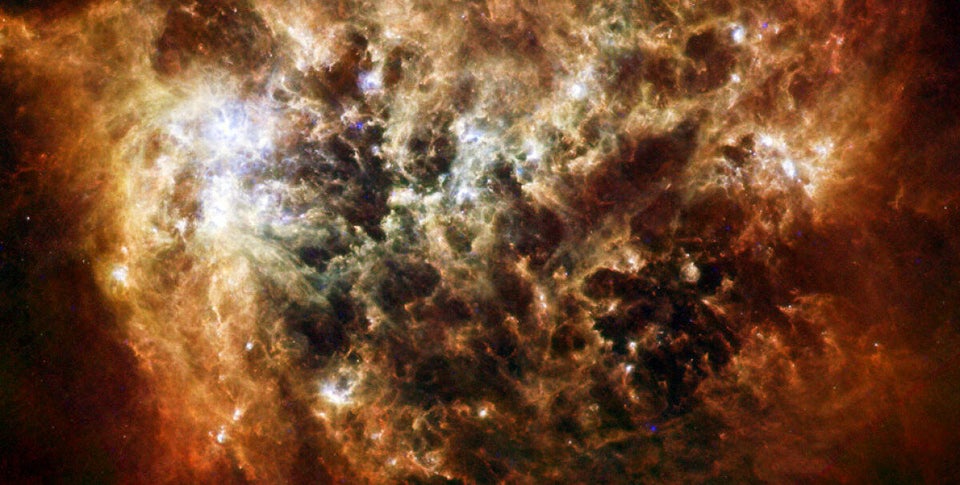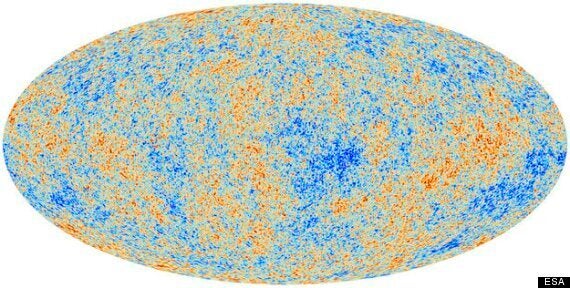
The European Space Agency has revealed the most precise map of the ancient universe ever made.
The 50-million pixels all-sky image of cosmic background radiation (CMB) made by the £515 million Planck satellite has already led to new theories of the age, composition and future of the universe.
The remarkable image was made by observing microwave radiation across the sky over 15 months, and stripping out dust emissions and radio frequencies from the Milky Way galaxy and more distant objects to leave just the afterglow of the Big Bang.
The result is an extremely precise picture of the universe just 380,000 years after the big bang.
The data suggests the universe is slightly older than previously thought - 13.81 billion years, 80 million years more than our previous best guess. That's based on new observations of the Hubble constant, the rate at which the universe is expanding. The new estimate of 67.3 km/s/Mpc is slower than previously though.
But the data could prove troubling for some scientists, as it includes "large scale anomalies" which point to a preferred direction of energy fluctuations in the universe - the so-called 'Axis of Evil'.
Rather than a totally uniform universe on the large scale, predicted by simple models of expansion, the early universe appears to be asymmetrical.
There is also a 'cold spot' which extends over much of the sky - which is again unexplained.
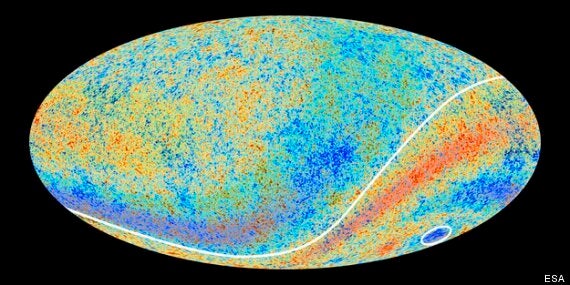
Above: an enhanced image of the anomalies, with the 'cold spot' circled
Planck was launched in 2009 to study the CMB In greater detail than ever before.
The map released on Thursday shows the temperature differences of the CMB in different directions of the sky.
The results also indicate that the universe is made up of slightly more ordinary matter than was previously thought - 4.9% of all matter, up from 4.5% - and that there is less dark energy (which cosmologists don't understand) than previously thought.
Dark matter, which can only be detected by its influence on gravity, makes up 26.8%, nearly a fifth more than the previous estimate.
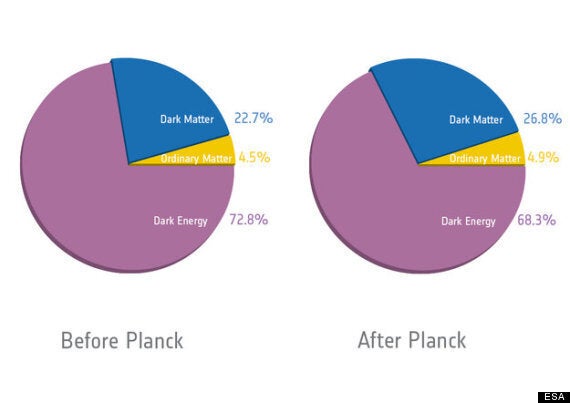
ESA explained:
"The CMB was frozen into the sky when the Universe was just 380 000 years old. As the Universe expanded, the CMB signal was stretched out to microwave wavelengths, equivalent to a temperature of just 2.7 degrees above absolute zero.
The mottled pattern represents minute differences in temperatures that correspond to regions of slightly different densities at very early times in the Universe’s history, representing the seeds of all future structure: the stars and galaxies of today."
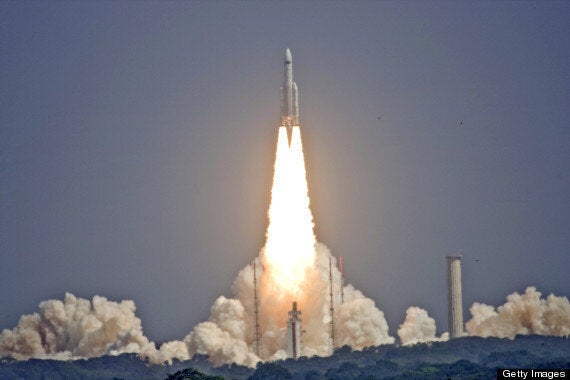
Above: The Ariane V ECA rocket blasts off from Kourou space centre, French Guyana, on May 14, 2009 to put into orbit the Herschel and Planck satellites.
ESA chief Jean Jacques Dordain said that the telescope had revealed "an almost perfect universe".
"You can see the seeds form which the galaxies were coming," he said.
Dordain paid tribute to ESA's partners including Nasa, which led the two previous missions to map the CMB (COBE and WMAP). But Dordain added that "this time we were the leaders".
Explaining the findings, George Efstathiou from the University of Cambridge and the Planck mission admitted that to non-scientists the picture looked a bit like "a dirty rugby ball". But he explained that to cosmologists it was among the most exciting maps ever made.
"Cosmology is not finished," Efstathiou added, pointing to the large scale anomalies in the data which are unexplained by standard models of the universe.
This "anomaly" suggests that there is a "preferred direction" in the expansion of the universe - the so-called 'Axis of Evil'.
The simplest models of inflation - the theory of the universe's very early, very sudden expansion and speeds greater than the speed of light- do not currently account for the anomalies found in the Planck data.
A cold spot also extends over a patch of sky that is much larger than expected.
The asymmetry and the cold spot had already been hinted at with Planck’s predecessor, NASA’s WMAP mission, but were largely ignored because of lingering doubts about their cosmic origin.
“The fact that Planck has made such a significant detection of these anomalies erases any doubts about their reality; it can no longer be said that they are artefacts of the measurements. They are real and we have to look for a credible explanation,” says Paolo Natoli of the University of Ferrara, Italy.
The ESA said that Planck will continue to release new data and images for up to a decade, and expected to find new and surprising features of the ancient universe.
“Our ultimate goal would be to construct a new model that predicts the anomalies and links them together. But these are early days; so far, we don’t know whether this is possible and what type of new physics might be needed. And that’s exciting,” said Professor Efstathiou in a statement.
Dr Chris Castelli, acting director of Science, Technology and Exploration at the UK Space Agency, said that the UK played a key role in building and launching the satellite and said "we're immensely proud".
"With its ability to make such detailed and accurate observations, Planck is helping us to place the vital pieces of a jigsaw that could give us a full picture of the evolution of our Universe, rewriting the textbooks along the way," Castelli said.
The UK's involvement includes:
- UK institutes and companies form part of the consortium that built the two focal plane instruments, HFI and LFI.
- The Jodrell Bank Observatory at The University of Manchester produced critical elements of the LFI receiver modules.
- Cardiff University, STFC RAL and SEA were involved with hardware development for HFI
- UK research groups including Imperial College London, University of Cambridge, and University of Oxford form the London Planck Analysis Centre and Cambridge Planck Analysis Centre are involved with data analysis and simulation for the HFI data analysis and simulation software, as is the University of Manchester
"With the most accurate and detailed maps of the microwave sky ever made, Planck is painting a new picture of the Universe that is pushing us to the limits of understanding current cosmological theories," said Jan Tauber, ESA’s Planck Project Scientist.
“We see an almost perfect fit to the standard model of cosmology, but with intriguing features that force us to rethink some of our basic assumptions.
“This is the beginning of a new journey and we expect that our continued analysis of Planck data will help shed light on this conundrum.”
